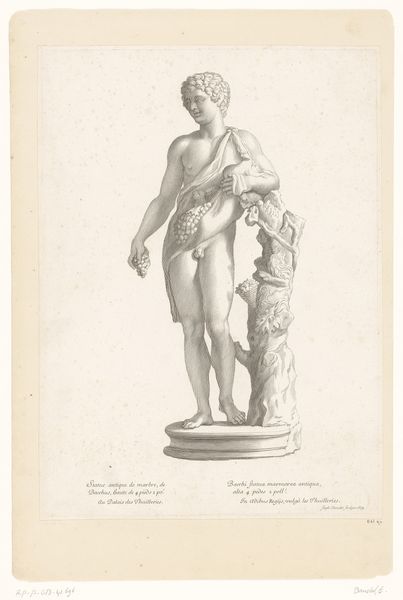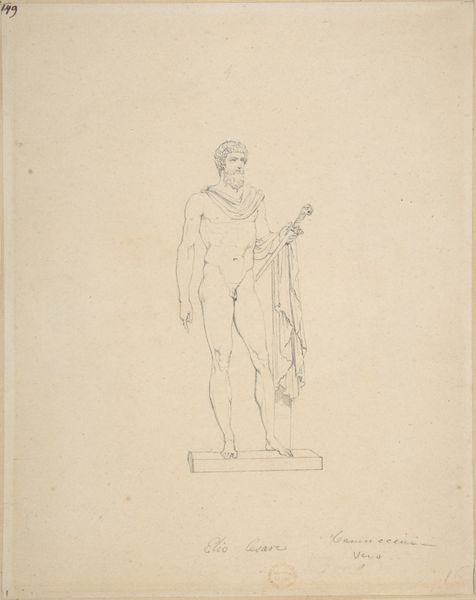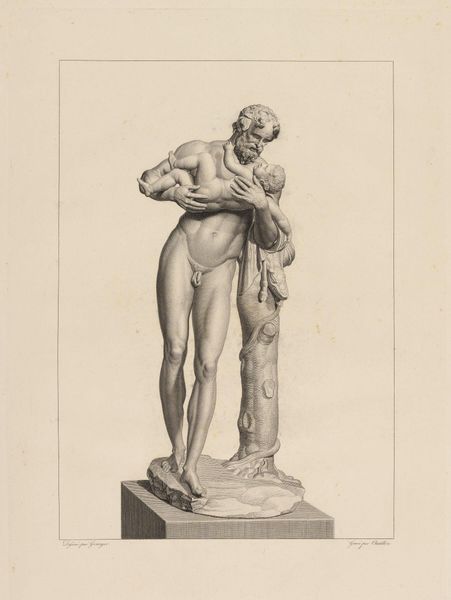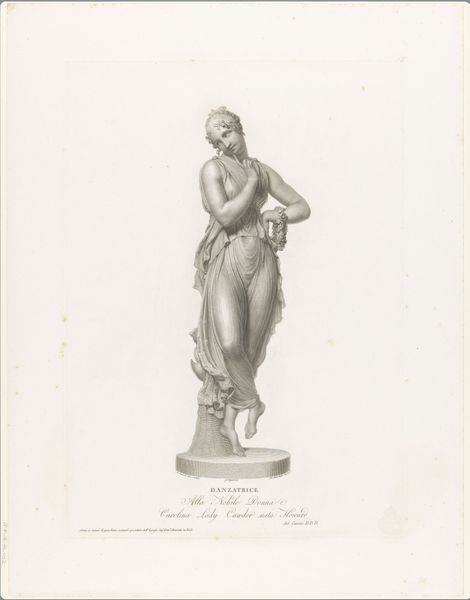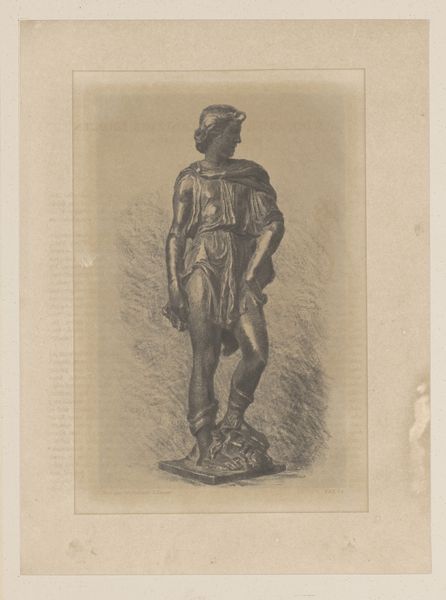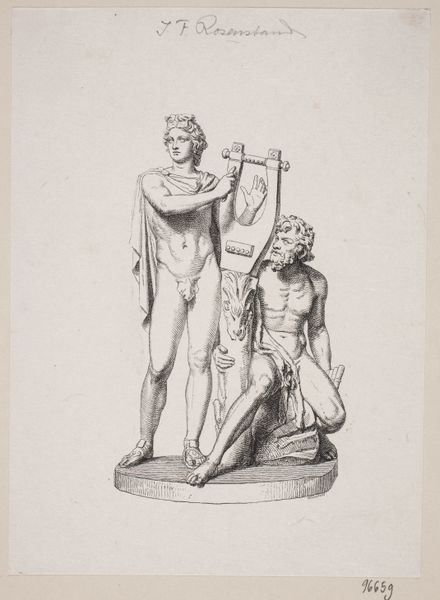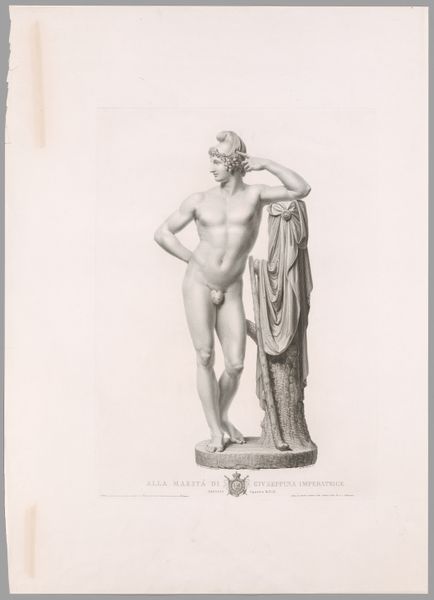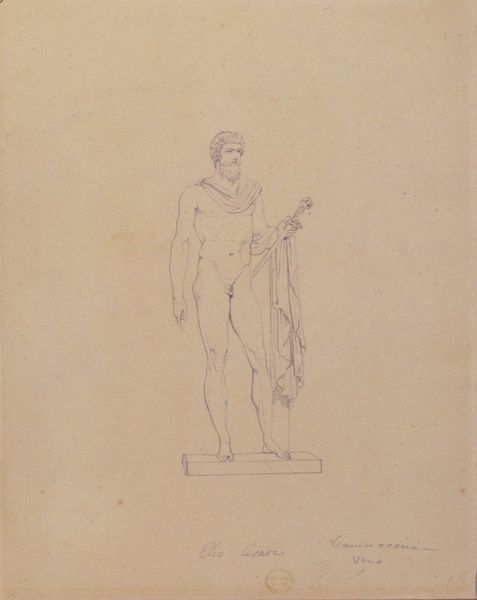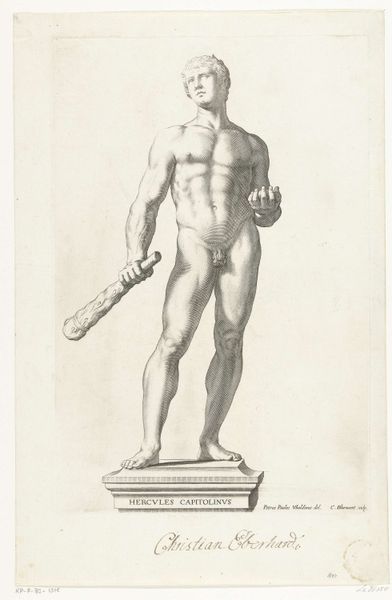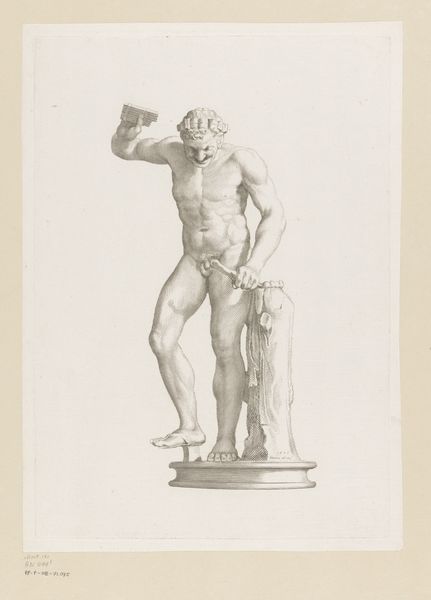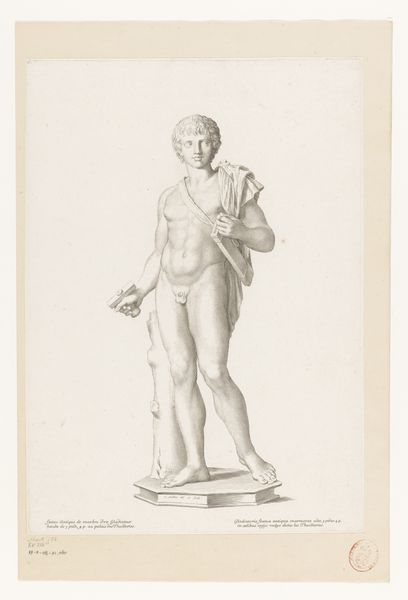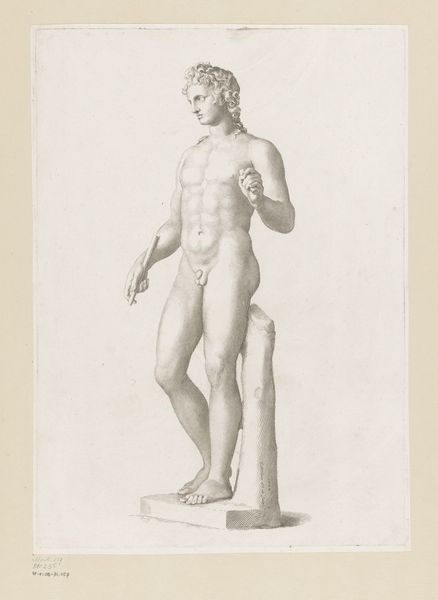
print, sculpture, engraving
#
allegory
# print
#
classical-realism
#
figuration
#
sculpture
#
history-painting
#
nude
#
engraving
Dimensions: height 348 mm, width 242 mm
Copyright: Rijks Museum: Open Domain
Curator: This print, titled "Hercules en Telephos," dates back to about 1820. It's currently held in the Rijksmuseum collection and is attributed to Pierre Bouillon. The work interprets a classical sculpture through engraving. Editor: There's a real starkness to the rendering; it is as if it is less about flesh and more about bone and sinew. That texture, combined with the classical subject matter, brings a severe monumentality to mind. Curator: That's astute. Bouillon clearly draws from the visual vocabulary of classical realism, presenting Hercules in a heroic, almost idealized manner, consistent with the period’s aesthetic values and revival of interest in Antiquity, of course. He doesn’t present an intimate scene but something of a moral statement. Editor: I can see how it reflects a fascination with the ancient world. And I agree, its more didactic in intent. Can we really extract ourselves from the sheer physicality depicted here? The muscular form, the lion pelt, and even the texture of the club... Curator: Precisely. It brings up the role of the hero within broader social contexts. Hercules was central in understanding authority during the era and a clear expression of power relations within society and colonial ambitions. And that classical nude has quite the visual currency. Editor: Indeed. Speaking of power, the print is derived from a sculpture—essentially reproducing labor and material—making it readily available to a broader audience. I wonder, who was buying prints such as these and for what purpose? Did they seek to ennoble their own status? Curator: Certainly, possessing and displaying such images was a means of aligning oneself with ideals of power and refinement that served the interests of the elite. Ownership signified cultivation and access to a classical tradition. The print format helped to solidify those cultural power structures. Editor: This reminds me how artistic forms are always bound to the culture in which they appear. They can really underscore the cultural, political, and even physical ideals valued during specific eras. I find myself reevaluating my ideas about classical interpretations and how these concepts have evolved. Curator: It’s valuable to see how this engraving doesn’t exist in a vacuum; its creation and reception were part of a larger societal narrative surrounding power and representation. And ultimately these symbols echo into the present.
Comments
No comments
Be the first to comment and join the conversation on the ultimate creative platform.
